There is something about the American West that lends itself to art. All kinds of art – whether it is poetry, music, or visual art it seems to naturally come out of this awesome space. Many artists have explored this place including Georgia O’Keefe, Ansel Adams, Robert Smithson, Nancy Holt, and the artists in Marfa, TX such as Donald Judd, Robert Irwin, and light artist Dan Flavin.
Judd, with the help of the Dia Foundation, purchased 340 acres in the late 1970s near the isolated town of Marfa in West Texas. It included the abandoned buildings of a former Army base and the artwork created for this place was intended to interact with the light, space, and place of this area.

After the hardscrabble cities of the Texan/Mexican border, coming to the art centric conceptual town of Marfa was a relief and revelation. We stayed in the old but beautifully restored Hotel Paisano. In 1955, this was where the crew for the iconic Hollywood film Giant stayed including Elizabeth Taylor, Rock Hudson, and James Dean. In case you weren’t aware of the film, the hotel conveniently placed giant black and white photos everywhere of the stars working on the production of the movie.



Dinner on the patio that night was a delight, and I began to see the quirky attraction of Marfa.

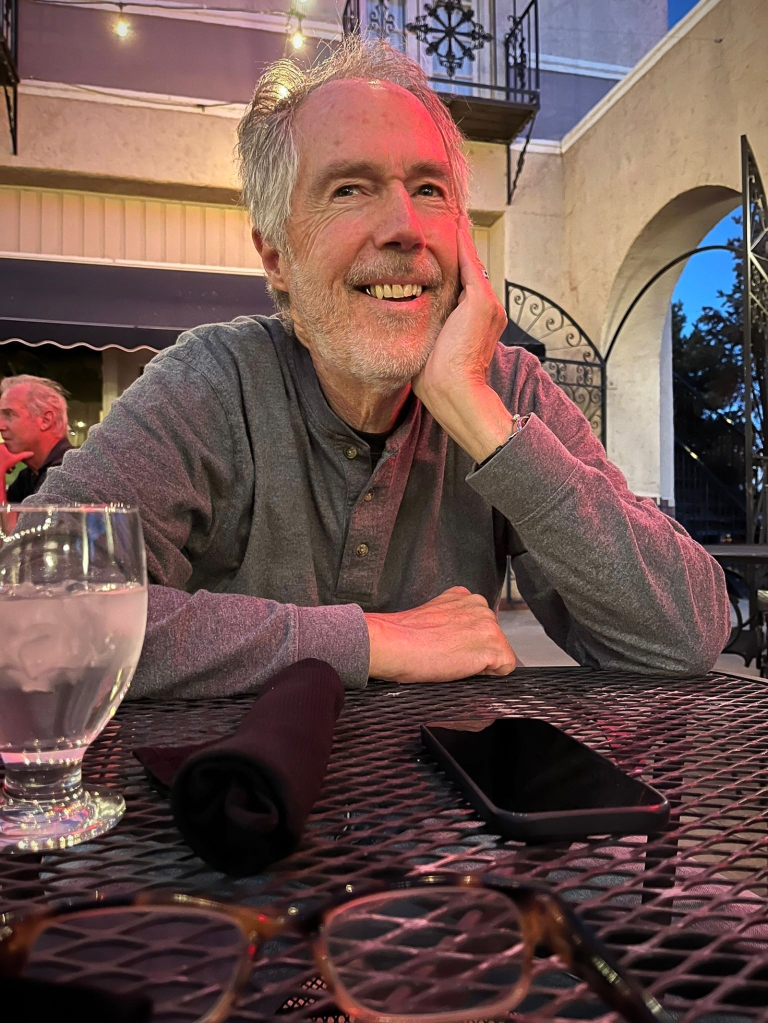
Early the next morning, we took a tour of Marfa including a great coffee shop in an old gas station and, of course, a great little public library off the main street.


We took a paid tour of the Judd site which is run by the Chinati Foundation. Our excellent guide took us through some of the artwork scattered throughout the old Army base and in the town. It was so exciting to see the actual work, especially of Judd and Irwin, and to see how they dealt with area’s space, place, and light. The basis of all this work was that it must be experienced in its context rather than simply reproduced in a book.




After Marfa, we drove West into the hot Texan landscape and after a long drive, drove through the city of El Paso, Texas which is across the river from Ciudad Juárez in Mexico. It is one of the largest binational metropolitan areas on the border. Drug cartel violence has spiked in Juárez, especially against women, and by 2022 over 700 people have been killed. Large-scale corruption has been endemic, especially with the police which resulted in the Mexican Armed Forces and Federales taking control from the local government. Juárez once had one of the highest murder rates in the world, but recent trends have seen a hopeful decrease in the violence.

We had hoped to photograph several public libraries in Juárez and had contacted a “fixer” who worked for CBS News to safely take us around the city and bring us back to El Paso in one piece. When we contacted him, he said that recent spikes in Cartel violence made it an especially bad time to go. And the recent surge in migrants trying to cross the border made it likely we would have a long wait crossing the border back into the US. With that information we quickly cruised on through this area, hoping that it would be safe enough to come back someday.

We ended our drive in Las Cruces, NM at the home of our friends Barbara and Keith. They had both retired from teaching art in Kentucky and had recently moved into their beautiful new home in the desert. It was fascinating to see them adjust to their new environment, and it will be interesting to see how they incorporate this place into their art.
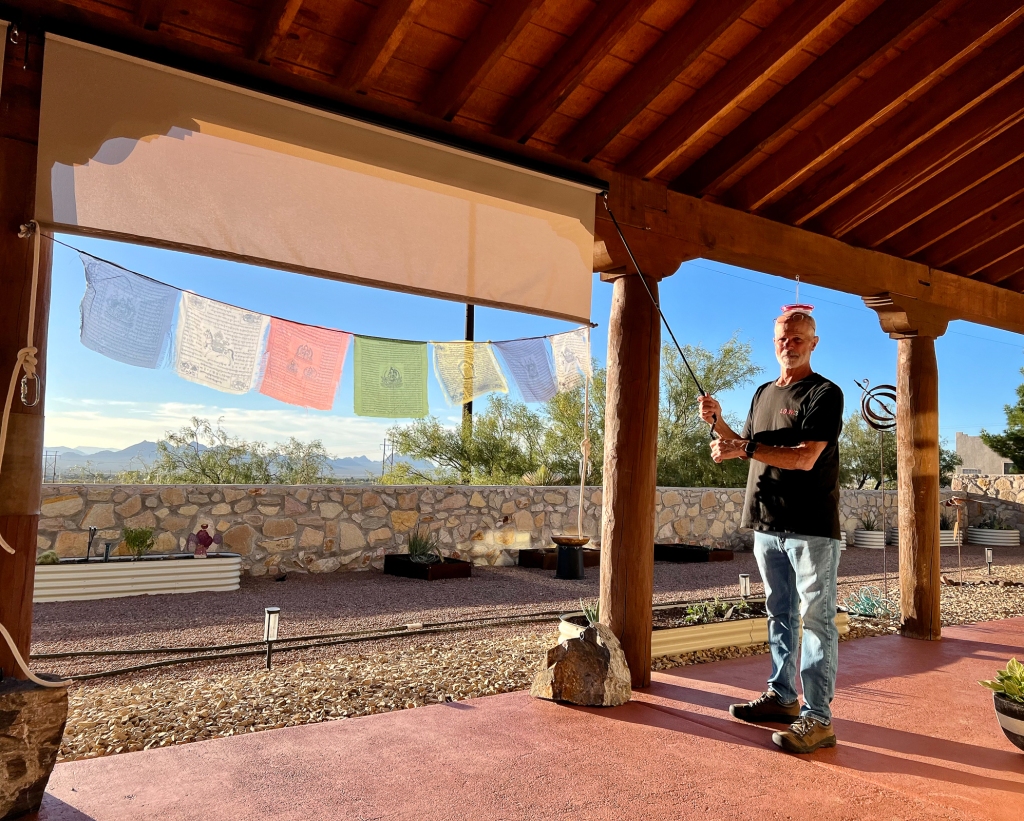
We didn’t get much sleep that night as we all got up at 5 AM and drove three hours to Roswell, NM to see the spectacular annular eclipse of the sun. The Roswell Public Library had made the eclipse into an event by letting a local astronomy club set up their big telescopes in the parking lot and let everyone view the eclipse through their filtered lenses.
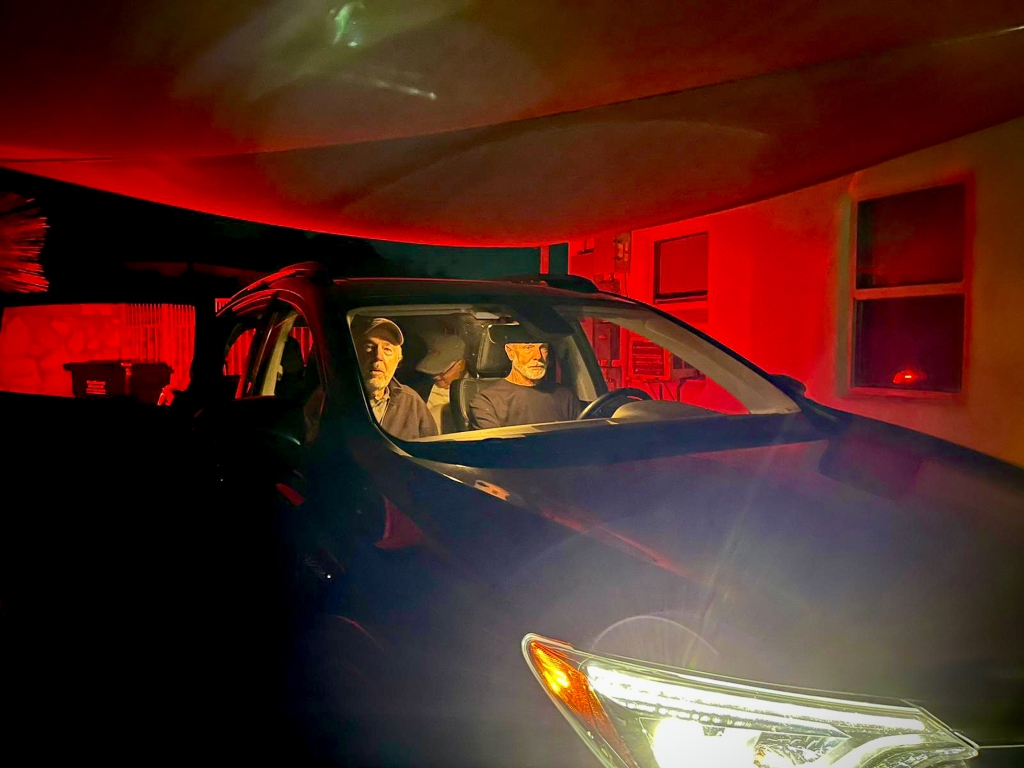





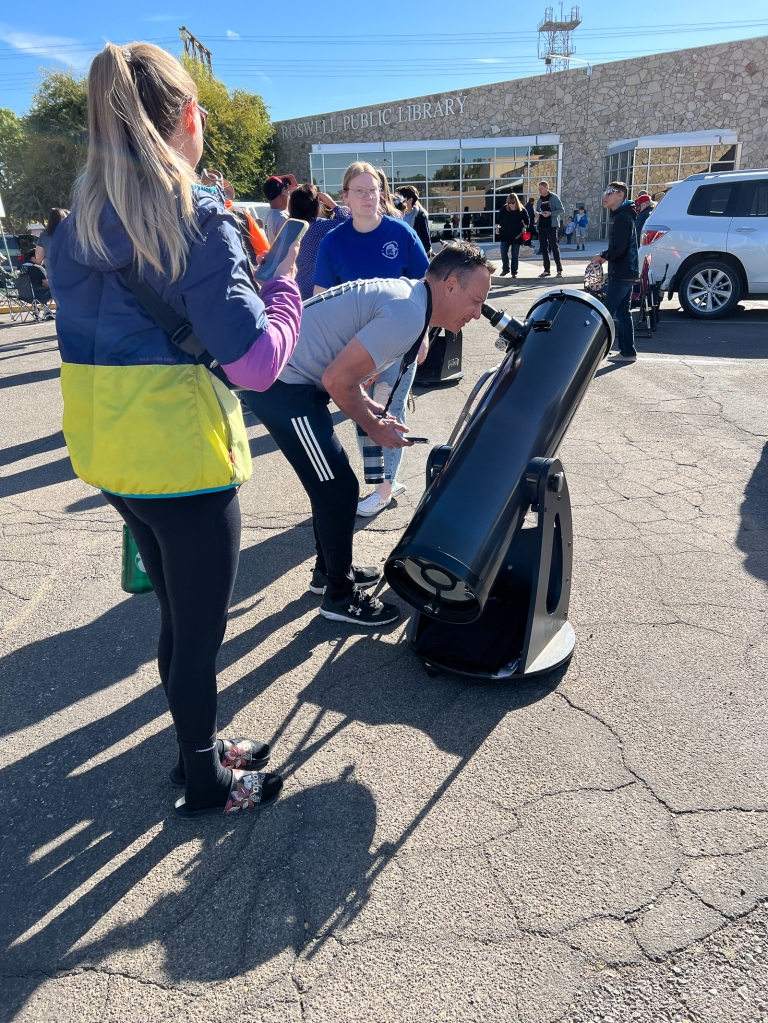

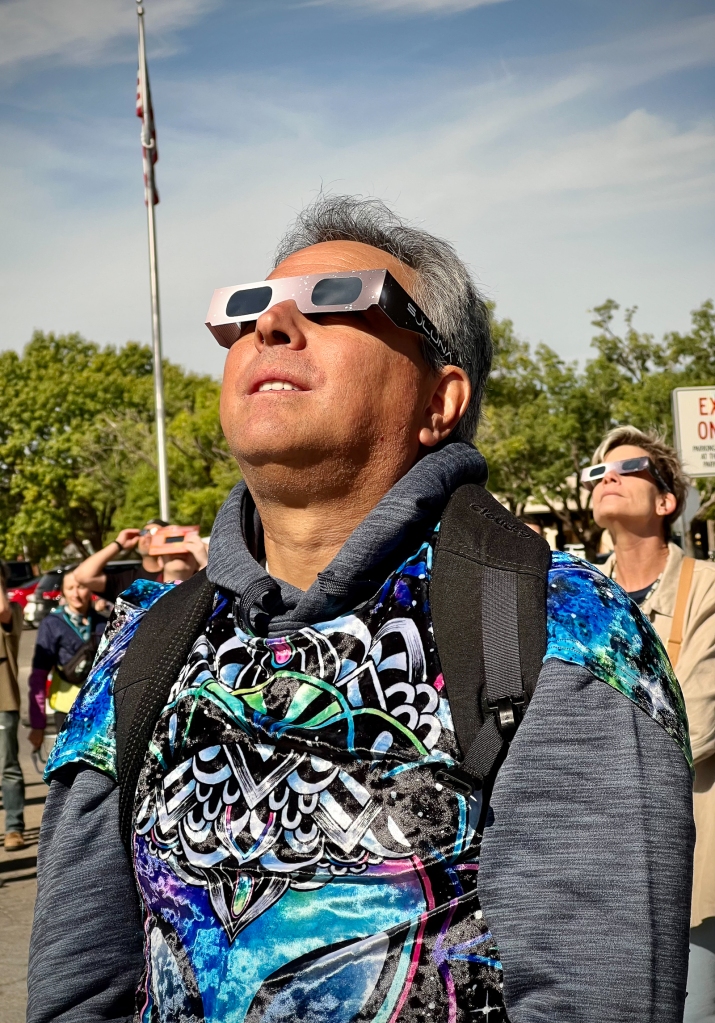


Roswell is an ordinary small New Mexican town that has promoted the heck out of its reputation as a space alien landing site and lots of colorful characters filled the library’s parking lot and downtown streets. It was delightful and positive community event, and we stood in awe as the sun darkened and was eventually eclipsed by the moon. Spontaneous applause erupted from the crowd when it finally happened. It was an unexpected and slightly weird example of a library as a center of a community.











Even though we had already had a long day, we all wanted to visit White Sands National Park on our way back to Las Cruces. This spectacular place turned out to be another highlight. The pure white sands were stunning, and we were all like 70+ year-old kids delightfully scrambling up and down the massive sand dunes.
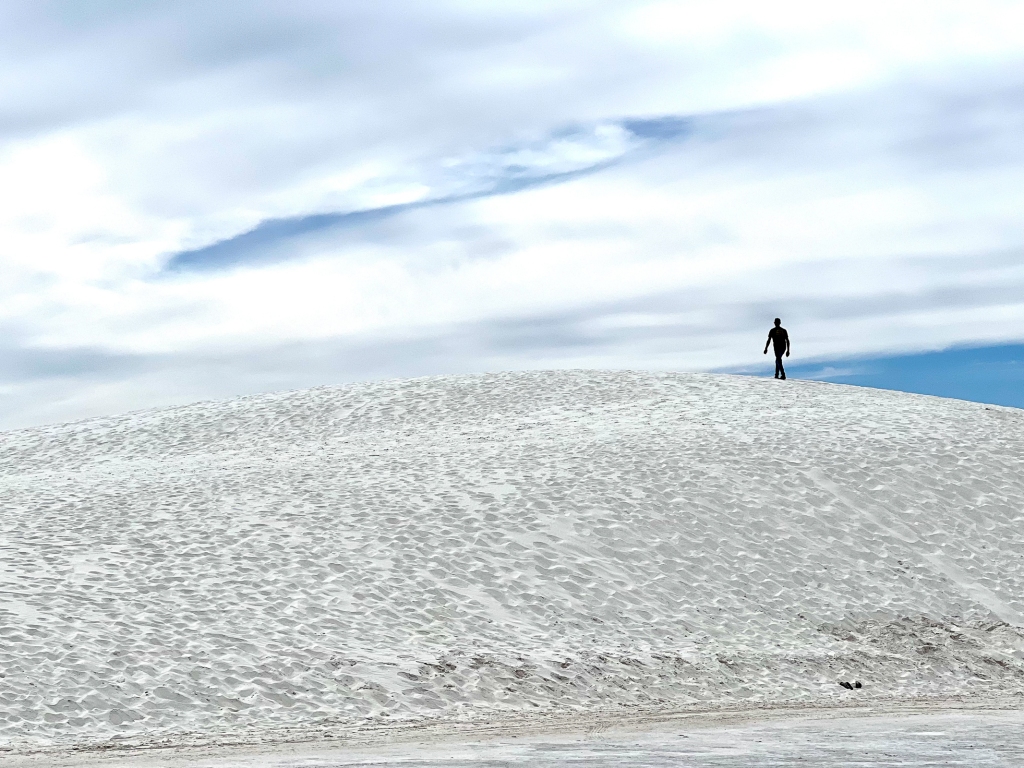

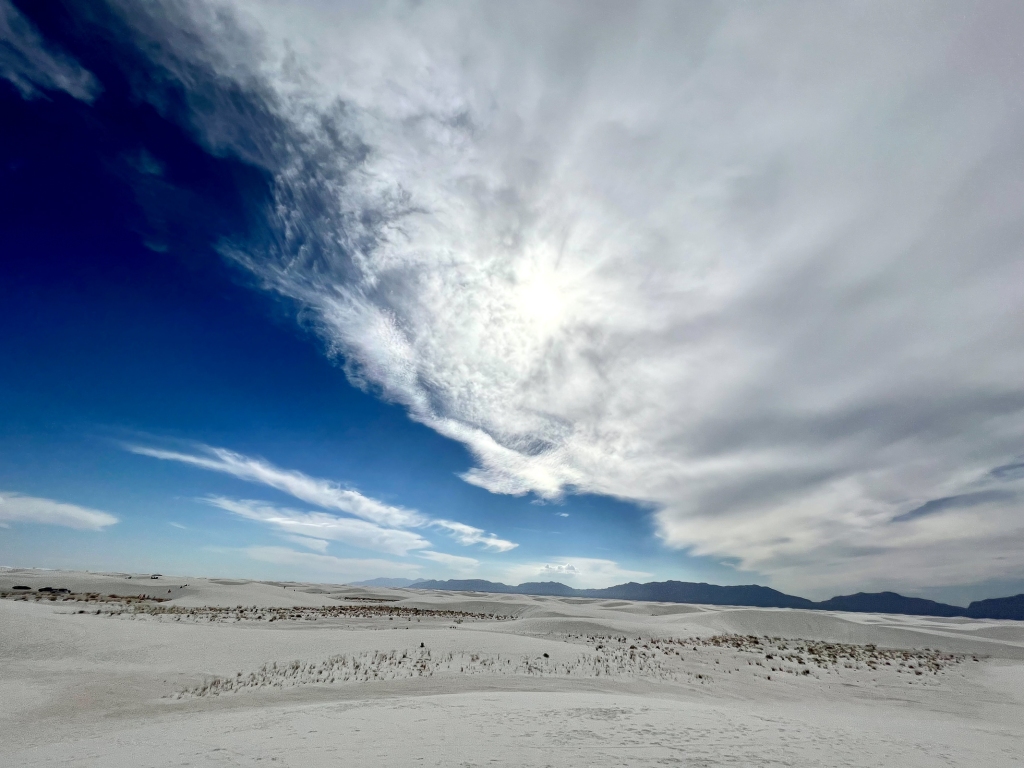
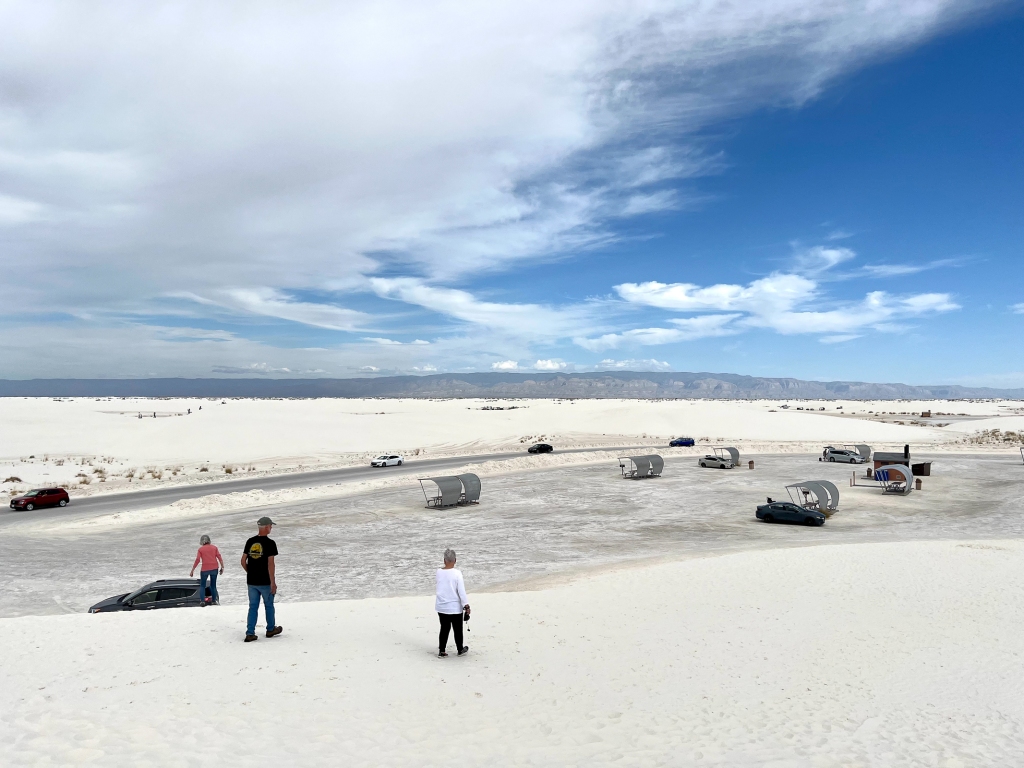

The next day, after a long drive, we arrived in Santa Fe, NM and the home of our friends Meridel, Ben, and Meridel’s ex-husband Jerry. They are all fabulous artists and we have known Meridel and Jerry for a long time. Jerry is a fourth-generation New Mexican, has just turned 90, and continues to do his wonderful paintings. Meridel is a noted photographer/artist who is currently finishing an enormous art project / wastewater treatment plant in Iraq. Ben is an Oscar-winning film maker who is currently teaching at the American Indian Art Institute in Santa Fe.


Jerry was a construction contractor during most of his time as an artist. Over the years has built all the buildings in their compound including where he lives and where Meridel and Ben live. The care and artwork in the adobe structures is everywhere.


Before Meridel began her complicated Iraq project, she did an equally complex project on the relationship between the development of the atomic bomb and the people of New Mexico. The release of the recent Oppenheimer film has sparked renewed interest in her earlier work. Ben continues to do impressive work with film making and he generously showed us the campus of the school where he works that is devoted to teaching art to young Native Americans from all over the country.

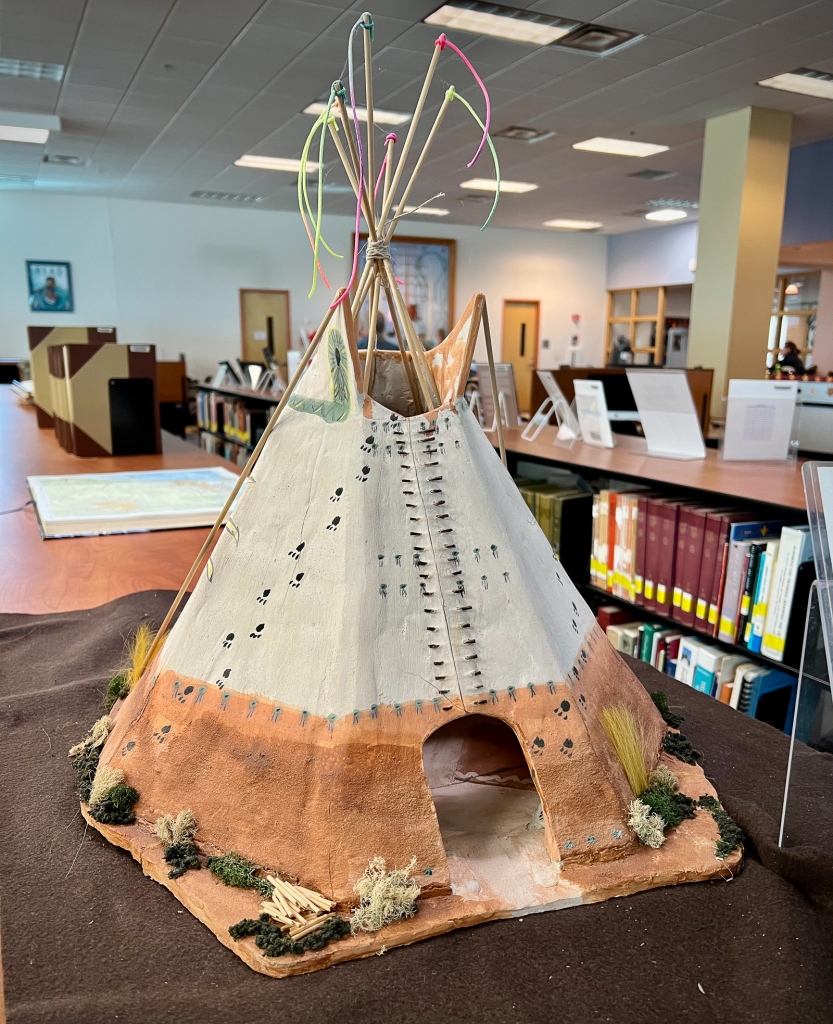
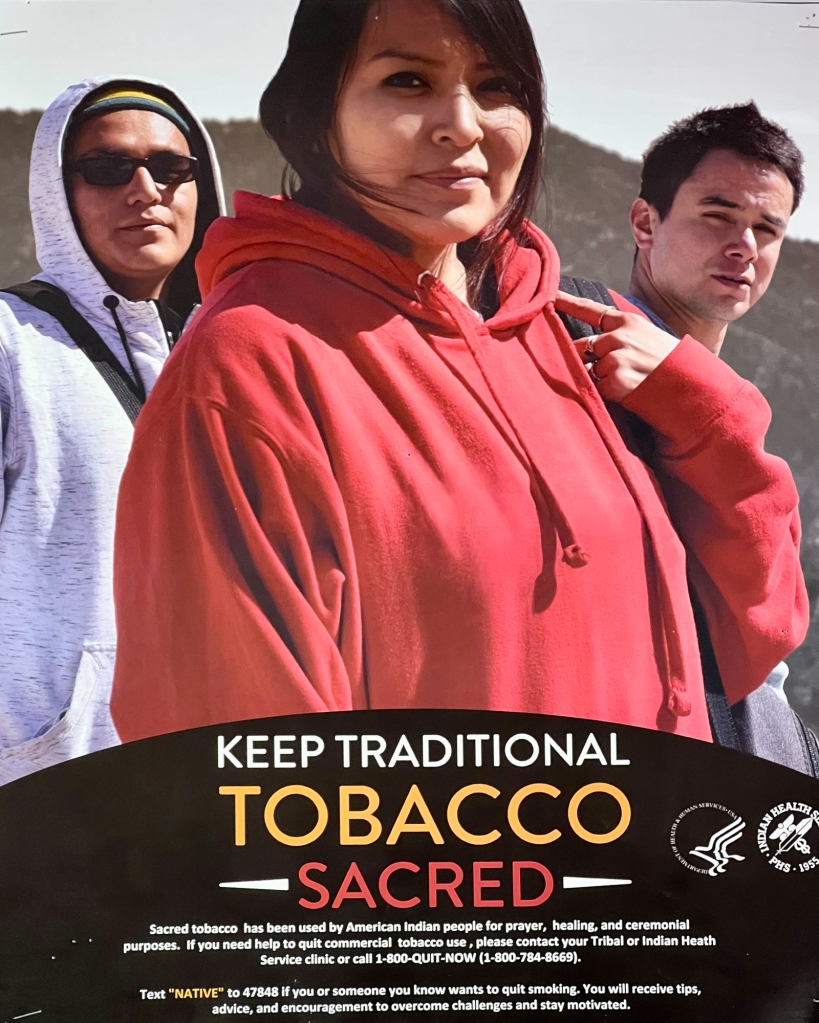
We hiked the land near Meridel’s property in the fading light of the afternoon and were deeply moved by the beauty of the desert. After dinner, Meridel shared examples of her fascinating and important work in her studio. The relationship between place, space, and light was evident in the work of all three of these talented artist’s work. It provided a surprising continuity with the work of Donald Judd and others that we had seen earlier in Marfa. And it reinforced our love of these arid lands.






One of our favorite books is called The Desert Smells Like Rain by Gary Nabhan. It is an inspiring book about the human relationship to dry lands. On my next blog we will explore a part of the West that has had a catastrophic past and a doubtful future in this dry part of the American West. Until then…
